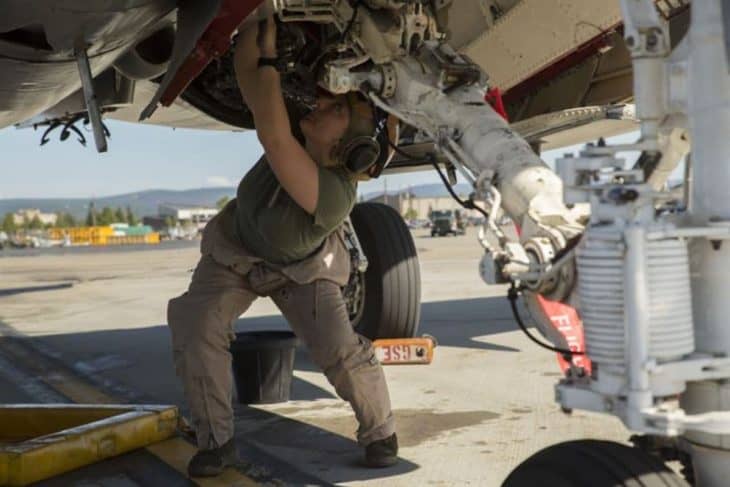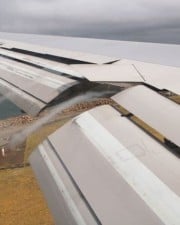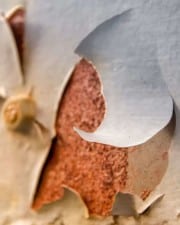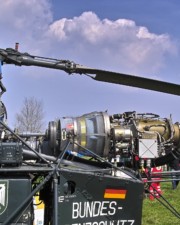The backbone of air travel is the aircraft maintenance crew. The crew is responsible for ensuring that a plane is fit to fly. However, modern aircraft come with complex systems that require not only knowledge in maintenance procedures, functionalities, and policies but also mechanical skills.
Table of Contents
For example, the A380 model comes with millions of components that are integrated with advanced avionics technology. Its elements are incorporated with a layer of backup systems to ensure that a plane stays aloft for over 20 hours.
Types of aircraft inspections can be divided into two broad categories, which include scheduled and unscheduled inspections.
Both scheduled and unscheduled maintenance and aircraft inspections are necessary for all aircraft to ensure that they are safe to fly and airworthy. Some inspections and maintenance schedules are known to both the cabin crew and aircraft technicians.

But some technical problems that are noticed by the AIP team during an inspection or by the pilot can be unscheduled and sudden. That’s why both the aircraft owners and cabin crew must understand the difference between the two types of aircraft maintenance inspections, which include unscheduled and scheduled checks.
Scheduled Aircraft Inspections
Scheduled aircraft inspection refers to any preventative maintenance that either the cabin crew or technicians perform at regular intervals. It includes annual examinations, 100-hour inspections, preflight checks, and progressive inspections to ensure that an aircraft is ready to fly and airworthy.
Annual Inspection
Annual aircraft inspection happens once every twelve months. It is necessary for all aircraft regardless of whether they are used for recreational purpose, flight instruction, or hire. The scope and details of the annual aircraft inspection are outlined in the FAR 43 Appendix D while the requirements for a yearly aircraft inspection can be found in FAR 91. 409a.

Annual aircraft inspections cover more details than preflight and 100-hours inspections. It includes all the examinations performed in other aircraft inspections such as flight controls and avionics checks, testing and inspecting the engine, review of all aircraft logbooks, and flight surfaces checks.
Aircraft maintenance crew usually notes down any problem or defect found in a plane during the annual inspection and repairs them to restore the airworthiness of the aircraft before it flies.
50 and 100 Hour Inspections
All aircraft that are operated for flight instruction or hire must undergo 50-hour or 100-hour inspections. However, aircraft owners and cabin crew should understand that the FAA doesn’t mandate the 50-hour maintenance. But aircraft technicians and owners should consider it, given that all aircraft have to change the oil every 50 hours.

Besides oil change, the 50-hour inspection can include inspecting the engine for wear and tear and gapping, cleaning, and examining the spark plugs. If the aircraft maintenance crew finds any excessive wear and tear, the damaged components are replaced to restore the airworthiness of a plane before it flies.
The 50-hour inspection is also an opportunity for the maintenance crew to address any minor maintenance or problem noticed by the pilot or the plane owner.
The FAA mandates all aircraft regardless of their use to undergo the 100-hour inspections. Aircraft owners and pilots can find those regulations under FAR 91. 409b provisions. The maintenance crew inspect all the major components of an aircraft and removes all fairings, cowlings, access doors, and inspection plates during the 100-hour inspection. The 100-hour inspection is the stage where the technical crew removes the windows, brakes, cargo and cabin doors, the skin and fabric of the fuselage, the tires, the flight control surfaces, the landing gear, and struts for inspection.

The technical crew then proceed to inspect the cockpit and cabin inside the aircraft to repair any potential issue, including malfunctioned seat belts and loose objects and controls. During the 100-hour inspection, fuel switches, battery, flight controls, yoke, and avionics are also tested and inspected for efficiency and safety.
Routine engine maintenance and inspection also happen during the 100-hour inspection. It involves the changing of oil and cleaning and repairing the spark plugs. If the technical crew finds any damage or defect on the plane, repairs are done to restore the airworthiness of the aircraft and ensure compliance with all applicable FAA regulations.
Preflight Checks
The cabin crew has to perform some preflight checks before the plane flies to make sure that nothing is malfunctioned or in a defect. Pilots and student pilots alike must use a checklist so that nothing is forgotten when performing a preflight check. The preflight plane inspection includes walking around the plane and inspecting any flight control surfaces and fuselage components for wear and tear and defects.

A pilot can also notice any other deformity that can impede a flight’s safety during a preflight check. During a preflight inspection, the cabin crew tests and checks the battery, cabin, avionics, and cockpit for proper functioning and operation of an aircraft. A scheduled flight is cancelled if anything abnormal is found on a plane; instead, the cabin crew grounds the plane and contacts the technical team for repairs.
Progressive Inspections
Also known as phase inspection, continuous inspection is utilized when an airplane with a tight flight schedule cannot take long in the maintenance hangar. Ongoing checks should take place at regular intervals. An aircraft owner can schedule a regular inspection every 25 or 50 hours.
Specific components of an aircraft are tested and examined for efficiency and safety during each continuous inspection session. The technical team performs this inspection orderly to allow for the completion of all the requirements for the annual and 100-hour review on time.
Unscheduled Aircraft Inspection
Unscheduled aircraft inspection can happen anytime a component is suspected of having malfunctioned. In short, unscheduled aircraft inspection refers to any unforeseen maintenance. Unscheduled aircraft inspection can happen after the cabin crew finds a problem with an aircraft during the preflight inspection. Unscheduled aircraft inspection can occur when a problem is found during the progressive, annual, or 100-hour inspection or after a flight malfunction.

Examples of unscheduled aircraft inspection could be anything from the sheared vacuum pump, low landing gear strut, in-flight issues to a worn tire. High magneto drop during the run-up and rough running engine are leading reasons why unscheduled aircraft inspection takes place.
Upon discovery, the cabin crew should report a potential problem to the technical team and fill out an unplanned inspection request. The aircraft will then be grounded until the technical team repairs the problem and ascertain that the plane is airworthy and ready to be flown.
Unscheduled aircraft inspection can mean trouble for the flight operators, and the technical team has to handle it before the plane is flown. Unscheduled aircraft inspection can; however, disrupt a flight and call the need for a spare aircraft to replace its scheduled routes. It might be required that the technical team drive or fly to where the malfunctioned aircraft is, or the aircraft be brought to their workshop. Both of these options can be costly and cause delay, but they are worth it.
A jet can’t fly for unscheduled inspection if it has a component that has not met the safety standards. While each flight has to be approved individually, sometimes the technical team can allow a ferry flight under specific conditions.
Aircraft inspection centers have access to all the servicing records of jets and choppers in their fleet. Manufacturers of aircraft usually publish procedures for repairs that specify the required components, operation checks, and time needed once an unscheduled inspection completes.

All aircraft inspection centers should have a predetermined team of troubleshooters with vast experience handling different technical cases for quick assembling of information. If an aircraft is not airworthy, the inspection team will fly or drive to where it is with all the needed equipment for repair.
An airline can either have a standing lease agreement with a company with small aircraft that the technical crew can use to fly to where a malfunctioned plane is. Having these small aircraft works well for airports where big airliners often get damaged or break down as they depart a taxiway or runway.
Some airports can speed up an unscheduled aircraft inspection by providing quick access to their equipment and facilities. These facilities can include crash recovery equipment that can lift and move the plane around and airstairs to get off and on an aircraft.
Unfortunately, there are no specific standards that an airline can take to be ready for an unscheduled inspection. Instead, the FAA expects all airports to have a continuing airworthiness program and be prepared for any unexpected breakdown. But the FAA has an advisory circular that outlines some guidelines regarding the use of contract maintenance for repairing unexpected breakdowns.

Anyone owning a fleet of aircraft is required by the FAA to outline the procedurals steps to take when directing and controlling an unscheduled aircraft inspection. Short notices for an unscheduled aircraft inspection do not void the responsibility of the aircraft owners to determine whether their inspection service has competent personnel, adequate equipment and facilities, or the manual for the work being done.
The FAA requires that all these determination be made before the aircraft inspection crew starts working on a plane. The determination methods and procedures for unscheduled maintenance should be in the manual of the aircraft manufacturer.
No aircraft is safe in the absence of an unscheduled maintenance and inspection program. Corrosion, wear, fatigue and deterioration with age are some of the factors that affect an aircraft. Unscheduled aircraft repair can be any quick action required for maintaining or restoring a plane in a serviceable state. It can include determination of an underlying condition, modification, servicing, inspection, overhaul, and repair.
In short, unscheduled aircraft inspection is any action necessary for restoring or sustaining the performance or integrity of an aircraft. It ensures that all components of an aircraft remain in its designed condition, perform its intended function, and meet the safety and reliability requirements.
Aircraft inspection helps keep an aircraft in a state in which it can be flown safely. While a plane can have a hangar environment, it has never been a necessity. The reasons for carrying out unscheduled aircraft inspection can include maintaining the airworthiness of the aircraft and keeping it in service. The availability of a plane matters a lot and ensures that it can meet all its scheduled trips.
Unscheduled aircraft maintenance also maximizes the value of the plane, including its components, engine, wings, propellers and airframe. Unscheduled inspection can be both corrective and preventive work. Precautionary work ensures that the plane has no undetected failures while unscheduled inspection monitors the performance of the plane and progress of the wear-out process. Unscheduled inspection can anticipate and prevent any possible faults.
Related Posts












